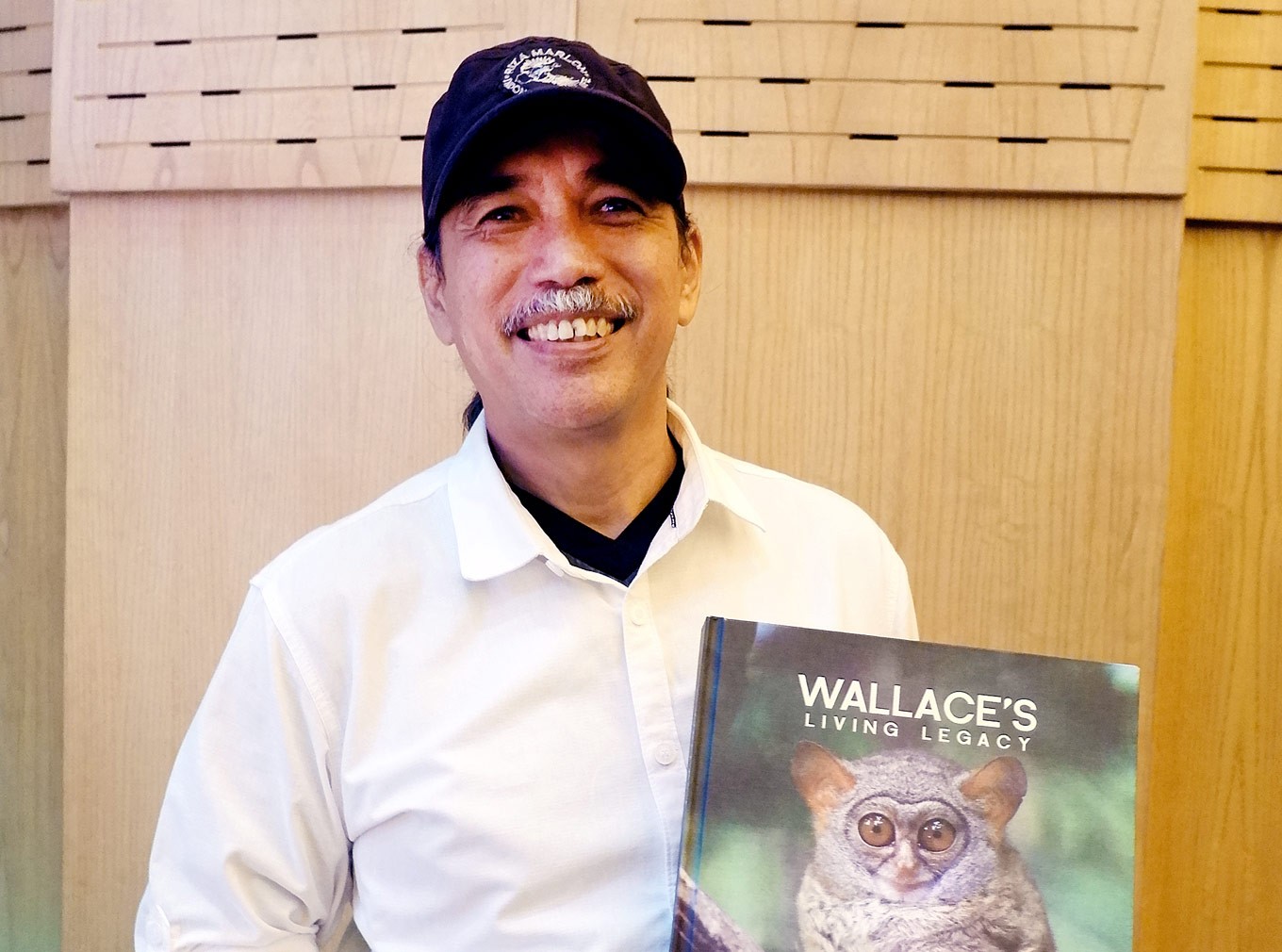Popular Reads
Top Results
Can't find what you're looking for?
View all search resultsPopular Reads
Top Results
Can't find what you're looking for?
View all search resultsRiza Marlon: Pioneer in wildlife photography
Change text size
Gift Premium Articles
to Anyone
R
iza Marlon is keeping his fingers crossed that more youngsters will follow in his footsteps in wildlife photography to save the environment and the country’s diverse endemic species.
However, with cases such as the tragic death of a man who was eaten by a large python near an oil palm plantation in West Sulawesi last year, not everyone is as sympathetic toward animals.
Today, the killing of humans by animals is a regular occurrence. In January, a Sumatran tiger mauled an oil palm plantation worker to death in Riau, Sumatra. In March, a man was killed by a crocodile in a village in East Kutai, East Kalimantan.
Although he cares about the victims of these attacks, Riza, a pioneer in wildlife photography, is frustrated at those who turn a blind eye to the root of the problem.
“They say the crocodile is dangerous and has to be caught and killed. That makes me sad. They [animals] have lost their homes and do not know where to find food. We [humans] are the ones who are guilty,” the 58-year-old said.
Indonesia might be the largest archipelagic country and one of the world’s most biodiverse countries, but in Riza’s mind, Indonesians have undermined the unique status by mistreating the environment.
[gal:1]
Having been a wildlife photographer for over 25 years, Riza recently spoke during the launch of his third photography book, Wallace’s Living Legacy, at the National Library in Jakarta in March.
The book is complete with over 200 photos of the country’s endemic animals.
“I am addicted to writing now,” he said.
To complete the book, Riza spent seven years trekking. His purpose was to develop a deep understanding of the animals he came across.
“We have to know our animals first before falling in love and caring about them. That is the aim of conservation in general,” he said.
“Around 90 percent of the animals [in the book] are endemic.”
Riza traveled deep into 22 forest areas in the Wallacea area, which covers Sulawesi, Maluku, West Nusa Tenggara (NTB) and East Nusa Tenggara (NTT).
The area was named after British naturalist Alfred Russel Wallace, who drew the Wallace Line in 1859, a faunal boundary line that runs between Borneo and Sulawesi and through the Lombok Strait between Bali and Lombok in West Nusa Tenggara.
More than half of the 700 species of birds in Wallacea are endemic to the area. One of them is the hornbill, a large bird known for its enormous beak.
The book features three endemic hornbill species: Julang Sulawesi,Kangkareng Sulawesi and Julang Sumba. Often referred to as forest farmers, these large birds contribute to natural forest regeneration by dispersing seeds.
[gal:2]
Indonesia has more endemic birds than any other country. Wallacea is home to cockatoo species that are on the brink of extinction due to illegal hunting and habitat loss. They are the Moluccan cockatoo, umbrella cockatoo and yellow-crested cockatoo.
Ninety-nine of 222 species of reptiles are endemic to Wallacea, including 37 species of snake, such as the Timor python, the skin pattern of which has been used for inspiration in the designs of traditional cloths.
Aware of the difficulty of spotting animals in the wild, Riza always teams up with local guides. Thanks to the internet, Riza said he could find them easily via Facebook.
Having local guides is important for Riza, who prioritizes safety by seeking input from them, such as on how to protect himself from potential wild animal attacks while working in the field.
Local guides also play an important role in helping Riza to find rare and shy animals.
[gal:3]
For example, the tarsier, a Yoda-like, tree-dwelling animal from Sulawesi that graces the cover of Wallace’s Living Legacy, is very shy and hard to find, but Riza was able to spot it with the help of a guide.
“When [the guide] mowed, a tarsier suddenly emerged in search of food after hearing the sound of grass being cut down,” he said.
Riza added that there was a lot of fauna endemic to the country that he was eager to capture, such as the Sulawesi civet and the invisible rail or Wallace’s rail, a large flightless bird that is found on the island of Halmahera in North Maluku.
Inspired by his parent’s wildlife magazines, Riza has had a passion for nature, flora and fauna since he was little. After graduating from high school, he studied nature and animal behavior at National University’s Biology Faculty in Jakarta.
As he grows older, he is still on the go and has no plans to retire. He is now preparing a new photography book that documents Indonesian primates.
He, however, admits that working in the wild requires a physical vigor. Therefore, he hopes that more young people will be interested in wildlife photography.
Riza disagrees with those who say that wildlife photography is expensive. He says it does not always require a big telephoto lens because, today, there are mirrorless cameras that are affordable.
“We have to promote Indonesian animals in every way, like how the Australian people promote the koala,” he said.











